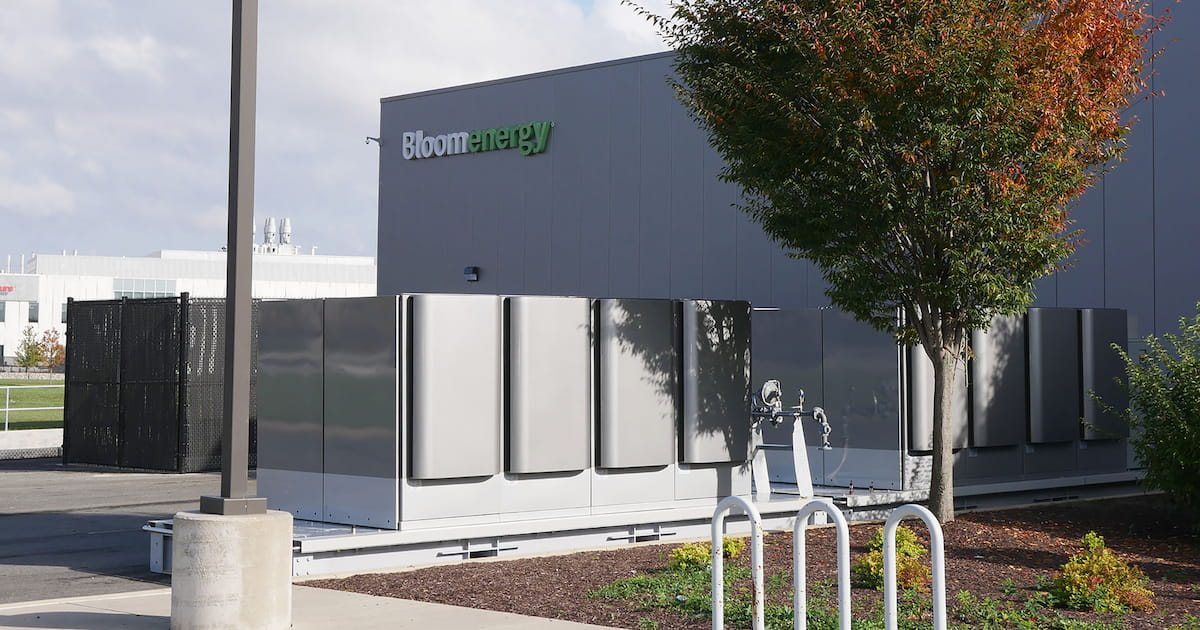Early this summer, Bloom Energy installed a 1 megawatt solid oxide fuel cell array at the Ferrari factory in Italy. It had arrived at an Italian port on May 12 and set-up was completed just before Ferrari’s Capital Markets Day on June 16.
We couldn’t have done that that fast in the past, but we were able to do so at Ferrari because of a significant change to the way we make and install our fuel cells. We can now deliver them as a system with built-in connections so they can be quickly joined to fuel sources and the facility that needs clean, reliable power. No more trenching, no more backfilling, no more praying for a stretch of good weather so installers can pour a concrete pad for the fuel cells to sit on.
The changes we have made could be easily overlooked by the casual observer because the boxes, which are about the size of a refrigerator, haven’t changed much in appearance. But they mean that the days of Bloom Energy putting in nine to 12 months of preparation work before a power-up are over.

In the past, construction crews had to locate and mark underground utilities; demolish and remove existing hardscape; rough-in and test utility hook-ups; pour a concrete pad and, once it was dry, lower the Energy Servers onto it. They then had to pull through and connect the utility lines, tie everything into the facility, and clean up.
Bloom’s site supervisors had to make multiple trips to check on the work of the local, specialized general contractor. The work also required multiple skilled trades, inspections, the presence of emergency response crews and permits. It was a lot of variables to manage and a lot of costs, which could differ greatly from one location to another. It has been a definite hit to our bottom line.
And so we began to think about how we could do things differently. How could we make the installations simpler, less disruptive for customers, and more cost effective? We looked at all the variables in our control and brainstormed ways to standardize them.
What we came up with was putting the Energy Servers on an additional base, a metal frame with power and ancillary modules already in it, fitted out and tested by the workers at our Delaware and California plants before being delivered to the job site. The whole assembly, which we call Packaged Energy Servers, can now be set on a compacted aggregate surface that can be prepared by any general contractor, and its above-ground cable trays can be connected to a substation by one tradesperson. We’re eliminating the concrete and asphalt our installation used to require, sharply reducing both that cost and the greenhouse gas emissions from those materials. Since late 2020, we have made more than 20 Packaged Energy Server installations.
The new approach works for both our solid oxide fuel cells and our electrolyzers, and the Packaged Energy Servers can support microgrid usage by adding a DC cable tray on top of the existing AC tray. We’re future-proofing the Packaged Energy Servers in other ways, too, to continue to drive down costs and increase margins as demand for our technology increases. That includes getting UL listing for the entire Packaged Energy Server assembly, which will further simplify permitting with local authorities.
Manufacturing our fuel cells on ready-to-install platforms is clearly better for Bloom Energy’s customers: They will get their power on faster, without big disruptions at their site or under the ground. There will be fewer permitting delays or construction headaches. If customers need clean, reliable power for only a short time, they can get an installation that meets that need. If they need to rapidly scale up their power supply, they can quickly add additional Packaged Energy Servers without disruptive digging that could damage the modules that are already there.
Ready-to-install platforms are also better for Bloom Energy and its investors. The more installation variables we can address and resolve in our factories, the fewer unplanned costs we will face on the job site. In the past, roughly 60% of the total installation cost for our fuel cells was in site construction. We have calculated that, by using these platforms, we decrease installation costs by about $499 per kilowatt. With our installations getting larger, the cost savings could be significant. Packaged Energy Services also make it possible for Bloom to recover its servers when the client’s lease or pilot test is over, or if their credit situation or location changes.
As I like to tell all of my colleagues at Bloom, it’s the most beautiful install possible.



